She couldn’t do it.
I don’t remember her name, or where she was from, or why she wanted to fish the Madison with a guide. All I can tell you for sure is that she couldn’t catch a trout on a nymph. Not on a bet. Not to save her life. To paraphrase one of my favorite authors:
She could not catch them in the rain.
Not in the dark. Not on a train,
Not in a car, Not in a tree.
She could not catch them, Sam, you see.
Not in a house. Not in a box.
Not with a mouse. Not with a fox.
She could not catch them here or there.
She could not catch them anywhere!
Nymphs, unfortunately, were the sole winning ticket that bright, sunny summer day in the braided water near Slide Inn. So we did the only thing that makes sense when you’re teaching someone to fish with an indicator.
You tell them to ignore the indicator.
“What’s that?” you say? “Ignore the indicator? That’s heresy! Madness! Lunacy!”
No, it’s not. Not when you’re working with people who have good eyes and a wonderful, perceptive mind - which this particular gal had - but who have slow-to-mediocre reflexes.
The indicator would do its thing - pause, hesitate, shudder, slow almost imperceptibly, dart upstream, disappear from sight, whatever - and she’d think about it for just a second and then set the hook. Which was too late. Always too late. She had no hook setting prowess, no hard-earned muscle memory, and those fish didn’t tend to hold onto those nasty little metal things that looked so much like the real deal. Nope, those trout had learned it was best to spit them out before they grabbed you by the face and hauled you to a place you really didn’t want to go.
“Yuck!” said the fish.
So we went commando. Or Zen commando. Tom Brown Jr. Scout commando, if you prefer. I told her that I was going to walk her through everything, and all she had to do was listen to my voice and think about what was going on, then do exactly what I told her.
It went like this:
“Remember, don’t worry about the indicator.”
“You’re going to cast into the fast water at the head of this little slot.”
“Think about what the fly is going to do, and where the fish is likely to be.”
“Make your cast.”
“Okay, the fly is sinking down through the water column. It’s dropping, it’s dropping …”
“It’s in the zone. Set the hook.”
She set the hook. The rod bent. The rainbow screamed out of the little side channel and headed for the main river.
We did that over and over. 75% of the time there was no visual indication that she could see, but it didn’t matter. She set the hook on every single cast and stuck a bucket load of nice trout; browns and rainbows that she probably had no business catching, but that always made her smile and laugh and giggle.
What a wonderful day on the water.
Say!
I like nymphs!
I do! I like them, Sam-I-am!
And I would fish them in a boat!
And I would fish them with a goat...
And I will fish them in the rain.
And in the dark. And on a train.
And in a car. And in a tree.
They are so good, so good, you see!
So I will fish them in a box.
And I will fish them with a fox.
And I will fish them in a house.
And I will fish them with a mouse.
And I will fish them here and there.
Say! I will fish them ANYWHERE!
With gratitude and respect for Ted Geisel - a.k.a. Dr. Seuss - who brought a tremendous amount of joy into the world.




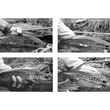



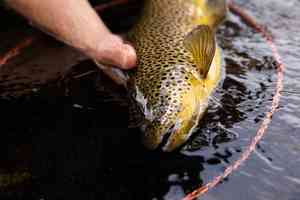

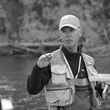



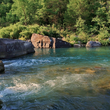
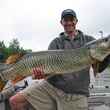

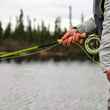


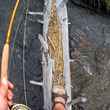
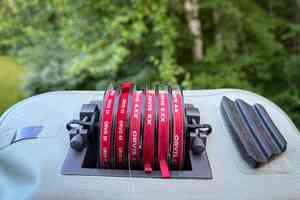
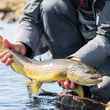
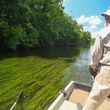
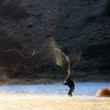
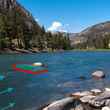





Comments
JP replied on Permalink
There are two tips here. Both good ones.
Ross Kessler replied on Permalink
Ok so after reading this I get it, she caught some fish. But, what did she learn? Or wasn't that what this was about? How can this sport turn this into a skill after being spoon fed fish? She had fun. You as a guide succeeded if catching is all that matters. As a mostly, dreaded, DIYer I want a learning moment when I get a pro for the day.
Todd Tanner replied on Permalink
Hey Ross. Good question. What did she learn?
In a narrow sense, she learned something that many nymph fishermen never figure out. That the indicator only shares a small part of the story. It tells you approximately where you fly is, and whether it’s drifting naturally, but it’s not always the best way to determine when you’ve had a fish grab your fly.
She also learned that it doesn’t take lightning quick reflexes to stick fish on nymphs.
On a macro level, she learned something far more important. She began to visualize the underwater world of the trout, and to anticipate where the trout would be and where her fly had to drift in order to elicit a strike.
From my perspective, she walked away knowing more about nymph fishing than many anglers will learn in a lifetime - which is why I shared the story.
My suggestion, from one DIYer to another, is that you try it yourself in a stream with a fair number of fish and see what happens.
Marcel replied on Permalink
Thanks for the great article. A lot of fishermen do not realize that many strikes go undetected. I have caught numerous trout "blind striking", always thought I was the only one.
Anonymous replied on Permalink
Great response. Simply...when you put the fly where you've learned the fish should be, the hook set is almost instinctual. They'll be there more often than not.
Brian Jackson replied on Permalink
Kevin Macreery out of the Mountain Angler in Breckingridge taught me how to fish with an indicator in a similar fashion. Only instead of saying "Set the hook" he'd say (in his typical understated fashion) "Believe I would." That was 20+ years ago and it still puts a smile on my face just thinking about it. "Believe I would!"
Tim_Y replied on Permalink
This article is perfect. I had been nymphing for years and it took a fortuitous experience to open my eyes. I was fishing in fast knee deep water and was watching my indicator. I noticed a flash in the current (where my fly was but I wasn't looking) and didn't put it all together until my indicator dropped a second later. I was lucky to hook my biggest trout to date, but now always remember to track the fly and not just the indicator.
DBC replied on Permalink
No different than bait fishing, just uglier, and more inelegant while using a fly rod!
Yes you will catch more fish, perfect for numbers and happy sports!
Guiding reduced to a boat and a bobber!
Not expecting to change anyone’s opinion!
Charles Phelps replied on Permalink
Thank you Todd,
How would you apply this to tightline nymphing? Can it apply with that technique or is it not needed (which is my hunch, but I am far from right all the time!).
Fred Rickson replied on Permalink
HEY, BOBBER FISHING IS HARD.
This year, because of age, my wife and decided to give up our summers on Hebgen Lake...just outside of West Yellowstone, MT. Tucson has more doctors close by. As such we sold my wife’s boat (a Whaler) and fished from my 14 foot Gregor. She is a bobber/chironomid type, while I have fished dry flies forever. Not a big deal; I just enjoy seeing a head, and “the take,” and why we have had separate boats for 35 years. While Melinda and her pals could recognize the slightest quiver of the bobber, I needed a “suicide fish” running the bobber underwater for a few feet before I would set the hook. We had a good time at my psychological and physical hook set deficiencies expense, while a good time was had by all.
Richard Wright replied on Permalink
I was nymphing on the Norfork River in Arkansas once where some nice rainbows were feeding on nymphs. I was using an indicator in fairly slow water, but for some reason the fish turned on their side to eat the nymph just like some suckers to do. I'd wait for the flash to go away then set the hook.
One thing I've learned sight fishing is that you can actually set the hook too early the same way you can when fishing dry flies.
Pages